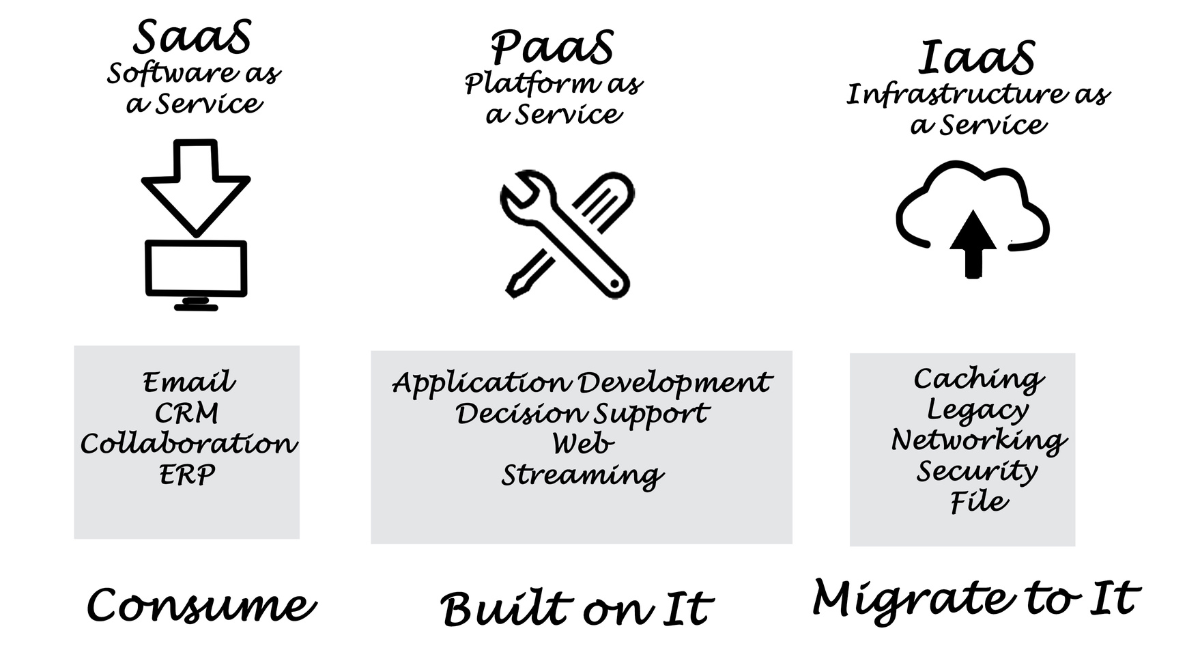Cloud Computing
What is cloud computing?
Cloud computing is a type of computing that relies on sharing computing resources rather than having local servers or personal devices to handle applications. It’s a way of delivering computing services—including servers, storage, databases, networking, software, analytics, and more—over the Internet (“the cloud”). Companies offering these computing services are called cloud providers and typically charge for their services based on usage, similar to how you’re billed for utilities like water and electricity.

Cloud computing services
Cloud computing services generally fall into three main categories: Infrastructure-as-a-Service (IaaS), Platform-as-a-Service (PaaS), and Software-as-a-Service (SaaS).
IaaS is the most basic type of cloud service and provides access to a virtualized computing environment, such as virtual machines, storage, and networking capabilities.
PaaS provides a computing platform, or environment, that allows developers to build, test, and deploy applications and services.
SaaS is the most mature cloud service and provides users with access to applications that run on a cloud provider’s infrastructure. Examples of SaaS applications include email, office suites, customer relationship management (CRM) applications, and collaboration tools.
Types of cloud computing
There are four main types of cloud computing: public, private, hybrid, and multicloud.
Public cloud services are provided over the public Internet and are owned and operated by a third-party cloud service provider.
Private cloud services are deployed within a company’s firewall and are usually managed by the organization.
Hybrid cloud combines both public and private cloud services, allowing organizations to move workloads between the two as needed.
Multicloud is the use of multiple cloud services from different cloud providers. It can provide organizations with more options for customization and flexibility.
Cloud security
The security of cloud computing services is a key concern, as organizations need to ensure that their data is safe and secure. Cloud providers use a variety of tools and techniques to protect data, including encryption, identity and access management, and auditing and logging. Organizations should also take steps to secure their own data and applications, such as using multi-factor authentication and following best practices for secure coding.
Cloud use cases
Organizations of all sizes can benefit from cloud computing, from startups to large enterprises. Common use cases include web and mobile applications, big data analytics, storage and archiving, disaster recovery, and more. Cloud computing is also popular for DevOps, or the practice of developing and deploying software quickly and efficiently.
Tips
- Research carefully before selecting a cloud provider. Make sure you understand how the provider handles security, data privacy, and compliance.
- Make sure your applications and data are secure by implementing best practices for authentication, encryption, and data protection.
- Take advantage of cloud scalability by monitoring usage and performance and making adjustments as needed.
- Have an understanding of the cost structure of the cloud provider and be aware of any additional costs that may come up.
- Make sure you have the right tools to manage and monitor your cloud environment.
Check List
- Research cloud providers
- Secure applications and data
- Monitor usage and performance
- Understand cost structure
- Have tools for management and monitoring
Cloud computing can be a great way for organizations of all sizes to access and leverage computing power with minimal upfront costs. With the right cloud provider, security measures, and management tools, cloud computing can be a reliable and cost-effective way to store, manage, and access data.
GET STARTED
.jpg)
.jpg)

.jpg)


.png)